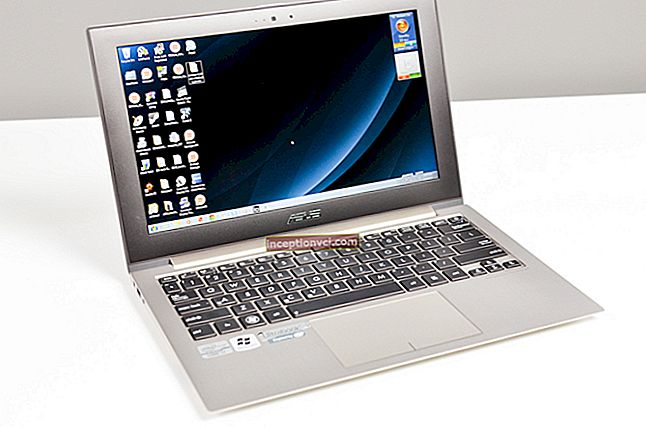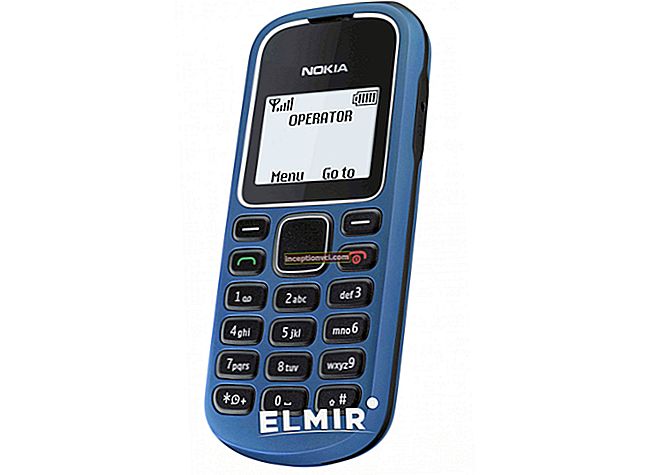
Intel, the leader in the production of TOP-level processors, following its Tik-Tak strategy, presented at the beginning of 2011 a new architecture of its processors - Sandy Bridge, symbolizing the Tak move. Processors based on this architecture will work on motherboards with an LGA1155 socket. For people following the development of computer technology, it will be clear that this is a new platform, and the previous one - LGA1156, as Intel said, will no longer be used in the future. Therefore, users need to be careful - when buying a processor based on LGA1155, they will also have to buy a new motherboard. The processors based on the Sandy Bridge architecture are made on a 32 nm process technology, like their predecessors on the Clarkdale architecture (first generation Core processors).
As you already understood, we will talk about the Intel Core i5 2500K processor. Therefore, first I will give its technical characteristics, after which we will get acquainted with it in more detail.Specifications:
Model | Intel Core i5-2500K |
Core | Sandy bridge |
CPU socket | LGA1155 |
Clock frequency, GHz | 3,3 |
Maximum frequency in Turbo Boost, GHz | 3,7 |
Nominal multiplier | 33 (unlocked) |
Bus frequency, MHz | 100 |
L1 cache size, KB | 4x324x32 |
L2 cache, KB | 4x256 |
L3 cache size, KB | 6144 (6 MB) |
Number of cores / threads | 4/4 |
Instruction support | MMX, SSE, SSE2, SSE3, SSSE3, SSE4.1, SSE4.2, EM64T, VT-x, AES, AVX |
DMI | 5.0 GT / s |
Supply voltage, V | ~1,38 |
Heat dissipation, W | 95 |
Technical process | 32 nm |
Technology support | Enhanced Intel Speedstep Technology, Enhanced Halt State (C1E), Execute Disable Bit, Intel vPro Technology, Intel Turbo Boost Technology 2.0, Intel Virtualization Technology for Directed I / O (Intel VT-d), Intel Virtualization Technology (Intel VT-x), Intel Flex Memory Access, Intel HD Graphics |
ECC support | there is |
Integrated graphics core
Computing conveyors, pcs | 12 |
Working frequency, MHz | 850 |
Maximum Turbo Boost frequency, MHz | 1100 |
The amount of used memory, GB | up to 1.7 |
Supported APIs | DirectX 10.1 (Shader Model 4.1) OpenGL 3.0 |
Interface | Intel FDI (2.7 GT / s) |
Proprietary technologies | Intel Quick Sync Video, Intel Intru 3D, Intel Clear Video HD (ACE, TCC, STE) |
HDCP support | there is |
Speed up video processing | Encoding: H.264, MPEG2 Decoding: MPEG2, WMV9 / VC-1, AVC, Dual Video Decode |
Intel Core i5 2500K, like its predecessors on the Clarkdale architecture, has an integrated graphics core - Intel HD. In this case, it is Intel HD 3000. The integrated graphics core will allow people who buy this processor not for games, but for work, not to spend extra money to buy a discrete video card, but to limit themselves to the existing one.

Now the i5 2500k processor itself. It is a quad-core processor with an unlocked multiplier (as indicated by the "K" suffix). In its second generation Core processors, Intel has chosen to "allow" overclocking only on processors that have the appropriate "K" suffix, so this should be considered when choosing a processor.

If we compare this processor with the older Intel Core i7 2600, 2600K, 2700K or with the younger Intel Core i3 2100, 2105, 2120, you will notice that it does not have Hyper Threading technology, that is, we have 4 cores and 4 threads and no additional "virtual" cores. You should also pay attention to motherboard chipsets. At the time the Intel Core i5 2500K was released, there were 4 types of them: H61, H67, P67 and Z68.
H61 - overclocking capability - absent, the ability to use integrated graphics - absent.
H67 - overclocking capability - absent, the ability to use integrated graphics - is present.
P67 - overclocking capability - is present, the ability to use integrated graphics - absent.
Z68 - overclocking capability - is present, the ability to use integrated graphics - is present.
For this processor, it would be "reasonable" to choose motherboards based on chipsets P67 and Z68... Of course, you can choose H61 or H67 and the processor, using Turbo Boost technology, will raise the frequency to 3.7 GHz, but this will be the maximum and buying a processor with an unlocked multiplier will lose its meaning.
At the time of writing this review, Intel has already released the third generation Core processors based on the Ivy Bridge architecture and the 22 nm process technology, as well as 4 new chipsets. B75, H77, Z75 and Z77... Motherboards with these chipsets also use LGA1155 and are compatible with Sandy Bridge processors. Therefore, I think it will be useful to write a little about them as well.
B75 - overclocking capability - absent, the ability to use integrated graphics - absent.
H77 - overclocking capability - absent, the ability to use integrated graphics - is present.
Z75 - overclocking capability - is present , the ability to use integrated graphics - is present .
Z77 - overclocking capability - is present, the ability to use integrated graphics - is present.
Thus, to the recommended chipsets P67 and Z68 added more Z75 and Z77.
The heat dissipation level of the processor is equal to 95 W and the included VOX cooler (if you, of course, did not buy the Tray version) should cope with this processor at nominal frequencies, maintaining the temperature within 50-55 ° C during stress tests ... If you are using the full potential of the processor and want to overclock it, then I would recommend buying a more efficient cooling system for the i5 2500k.

Another plus of this processor is a dual-channel memory controller, which allows using RAM strips at frequencies of 1066-2400 MHz.
Note: A motherboard with a P67, Z68, Z75 or Z77 chipset is required to use 1600MHz or higher RAM. Otherwise, they will operate at a frequency not exceeding 1333 MHz.
Also, the processor's pluses include L3 cache memory (6 MB). This memory is common to the entire processor and serves for faster data processing.

Benchmarks at nominal frequencies:
Cinebench R10 multithreading
Intel Core i5-2500K: 39 sec
Intel Core i7-2600K: 35 sec
Intel Core i7-870: 46 sec
Intel Core i5-750: 59 sec
Intel Core i7-980X: 32 sec
Cinebench R10 single thread
Intel Core i5-2500K: 2 m 22 sec
Intel Core i7-2600K: 2m 19sec
Intel Core i7-870: 2 m 58 sec
Intel Core i5-750: 3 m 17 sec
Intel Core i7-980X: 3 m 00 sec
x264 HD video encoding
Intel Core i5-2500K: 27 fps
Intel Core i7-2600K: 35 fps
Intel Core i7-870: 28 fps
Intel Core i5-750: 19 fps
Intel Core i7-980X: 43 fps
Overclocking
A word that scares a certain part of the population, and pleases another. Overclocking is no more difficult for this processor than for other processors. The only peculiarity is that the frequency of this processor is increased, in most cases, by a multiplier, because the bus frequency is almost impossible to increase if you do not use high-end motherboards. If you have a motherboard and a medium / high-level cooling system, the processor frequency can be raised to 4.5 GHz by setting the supply voltage to ~ 1.4 V. If you thought that 4.5 GHz is the overclocking limit of this air-cooled processor, then this is not true. 4.5 GHz is the frequency at which the processor can operate stably.
Conclusion
Intel has once again proved and strengthened its leadership position in the processor world with the release of Sandy Bridge processors. At the moment, the main competitor - AMD has no solutions that could compare with the performance of new products from Intel. Of course, you can say that AMD solutions are cheaper, but at the same time less productive.
Returning to the "protagonist" of the review, I will say that Intel Core i5 2500K is a very good choice both for creating a productive system and for overclockers who want to conquer maximum frequencies. The price of the processor is almost twice as high as the competitor's 4-core solutions, but at the same time, its performance is also twice as high. Therefore, we can state the fact that this processor deserves attention and is an excellent choice for creating a high-level system.
Interesting article: "Which processor is better: Intel or AMD?"









